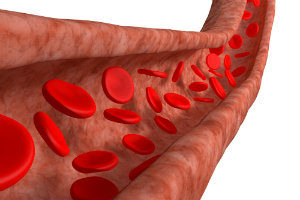


One of the most intricate transportation systems lies not on the roads, but within our own bodies. Our blood vessels, ranging from large arteries to extremely small capillaries, would extend an estimated 60,000 miles if all laid end to end. We need all these pathways to get the oxygen and nourishment our cells need through our blood. As you might know from our highways, though, any narrowing or blockage of these routes can cause problems down the line. That’s the concern of peripheral arterial disease, or PAD.
 What is peripheral arterial disease?
What is peripheral arterial disease?PAD is a relatively common condition of the circulatory system in which the flow of blood through arteries has become narrowed. This often creates a problem where the limbs do not receive enough blood to keep up with the demands of muscles and other cells. This tends to be especially true with the legs and feet, which are farther away from the heart than the arms.
A buildup of plaque is most often responsible for narrowing the arteries. Plaque itself is a dense mix of extra fat, cholesterol, and bits of other substances such as proteins and calcium that travel through the bloodstream. These materials can slowly clump up against artery walls over time, covering up the smooth tunnels with rougher surfaces that can catch more materials.
People who are aged 50 or older have a higher risk of PAD, as do those who smoke, have high blood pressure, have high cholesterol, or live with diabetes.
Peripheral arterial disease can take a very long time to progress to a point when symptoms begin to appear. In many cases, an artery may be narrowed by more than half before any outward signs are shown.
The first symptom from poor circulation that tends to be noticed is pain or cramping in the legs during physical activity. This is known as intermittent claudication, and the discomfort it produces will usually fade upon resting.
Other symptoms to watch for in the legs and feet include:
The last symptom is especially dangerous, as wounds that struggle to heal are more likely to become seriously infected.
Treatment for peripheral arterial disease involves managing the uncomfortable symptoms it may bring about, such as intermittent claudication. With these under control, it becomes easier to make the lifestyle changes one might need to stop the buildup of plaque in the arteries and reduce the risks of severe damage.
Depending on the specific case and other conditions that may be tied to it, certain medications may be prescribed to help manage the condition. This may include drugs to ease pain, lower cholesterol, or control blood sugar or blood pressure. A monitored exercise program may also be recommended to help the body adjust to a reduced supply of oxygen and nutrients from poor circulation, making it run more efficiently. Although this may cause pain at first, comfort will improve as the body reconditions itself.
In more severe cases, a surgical procedure such as angioplasty or bypass surgery may be needed to help restore blood flow.
Pain, coldness, or numbness in your lower extremities is never something to accept as “part of life.” Dr. Kevin Powers of Bloomington, IN can help you get to the sources of these problems before they potentially turn into something worse. Schedule an appointment with our office by calling (812) 333-4422.